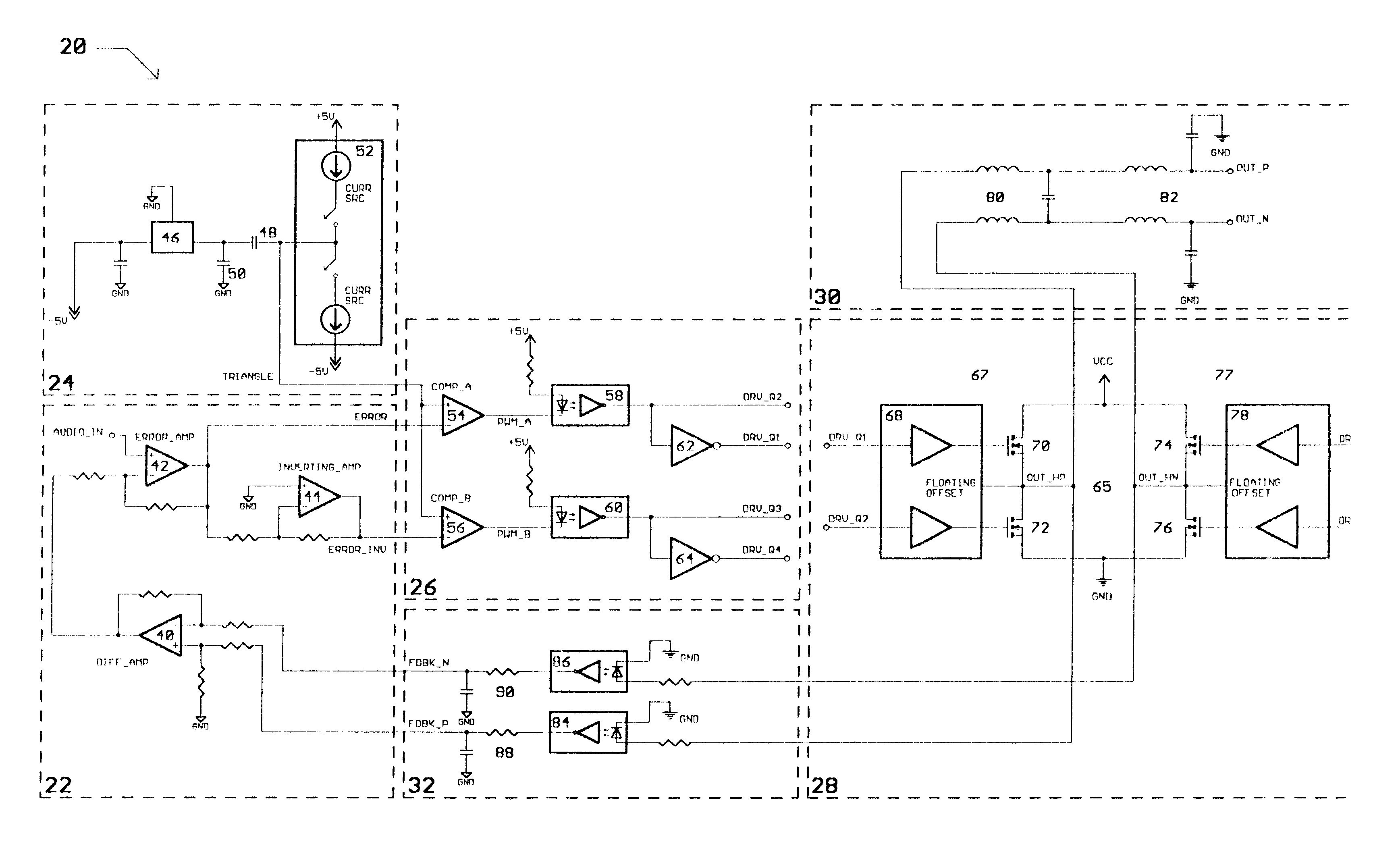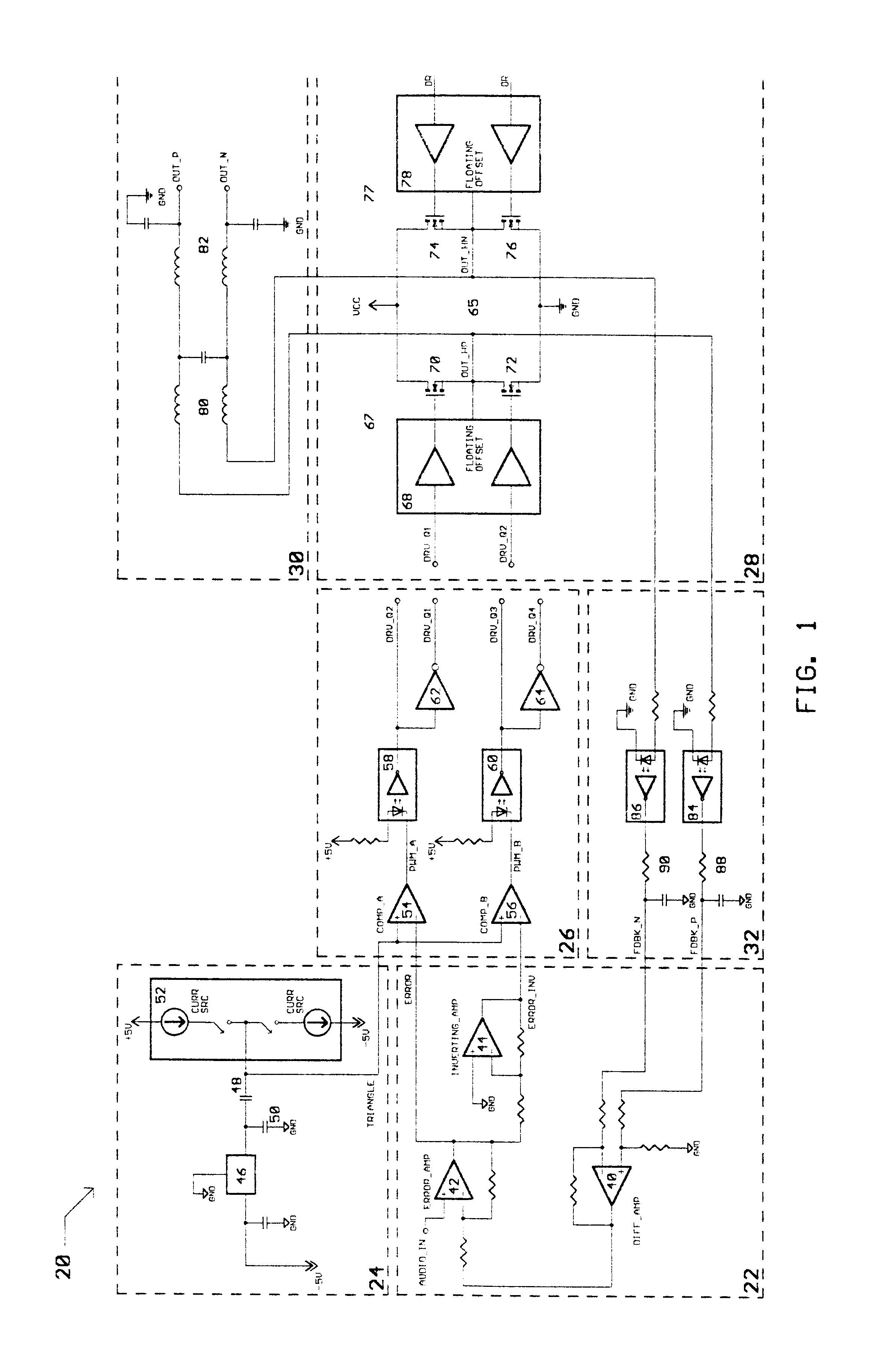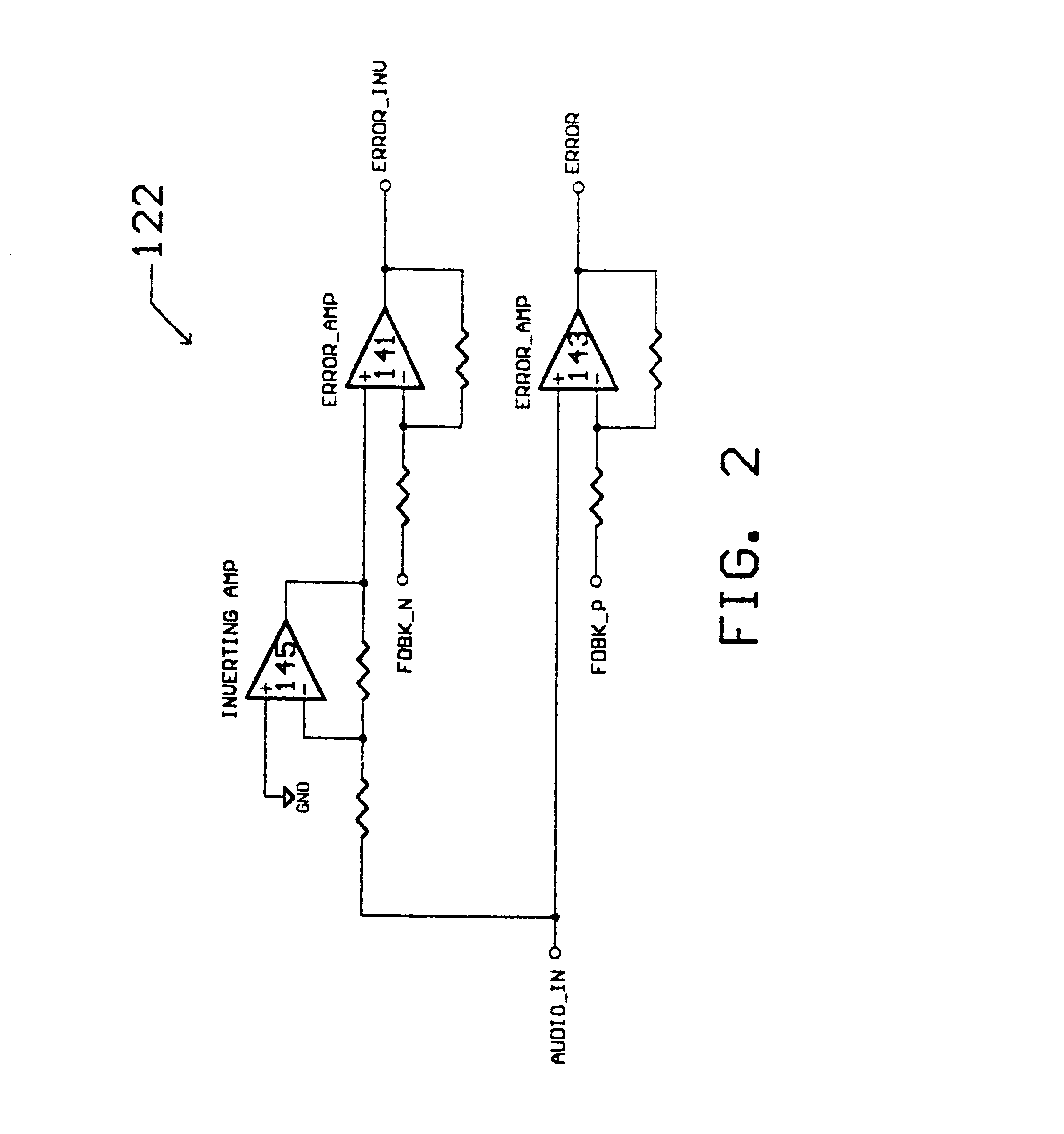Class D switching audio amplifier
a switching audio amplifier and amplifier technology, applied in the direction of amplifiers with modulator-demodulator, amplifiers with semiconductor devices/discharge tubes, dc amplifiers with negative-feedback circuit arrangements, etc., can solve the problems of wasting energy, existing class d amplifier designs suffer several disadvantages, modulation, isolation, feedback,
- Summary
- Abstract
- Description
- Claims
- Application Information
AI Technical Summary
Problems solved by technology
Method used
Image
Examples
Embodiment Construction
, below.
A preferred embodiment of the present invention is described in detail below with reference to the attached drawing figures, wherein:
FIG. 1 is a circuit diagram of a preferred embodiment of the present invention;
FIG. 2 is a circuit diagram of an alternate circuit topology for an input stage portion of the present invention;
FIG. 3 is a circuit diagram of an alternate circuit topology for a gate drive stage portion of the present invention;
FIG. 4 is a circuit diagram of a first alternate circuit topology for a feedback stage portion of the present invention;
FIG. 5 is a circuit diagram of a second alternate circuit topology for the feedback stage portion of the present invention;
FIG. 6 is a depiction of a switching portion of the output stage in a configuration corresponding to a first switch state;
FIG. 7 is a depiction of the switching portion of the output stage in a configuration corresponding to a second switch state;
FIG. 8 is a depiction of the switching portion of the out...
PUM
 Login to View More
Login to View More Abstract
Description
Claims
Application Information
 Login to View More
Login to View More - R&D
- Intellectual Property
- Life Sciences
- Materials
- Tech Scout
- Unparalleled Data Quality
- Higher Quality Content
- 60% Fewer Hallucinations
Browse by: Latest US Patents, China's latest patents, Technical Efficacy Thesaurus, Application Domain, Technology Topic, Popular Technical Reports.
© 2025 PatSnap. All rights reserved.Legal|Privacy policy|Modern Slavery Act Transparency Statement|Sitemap|About US| Contact US: help@patsnap.com



